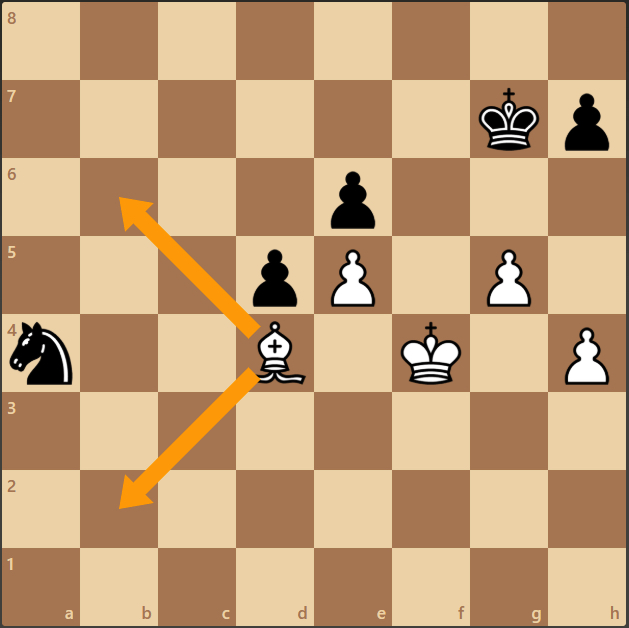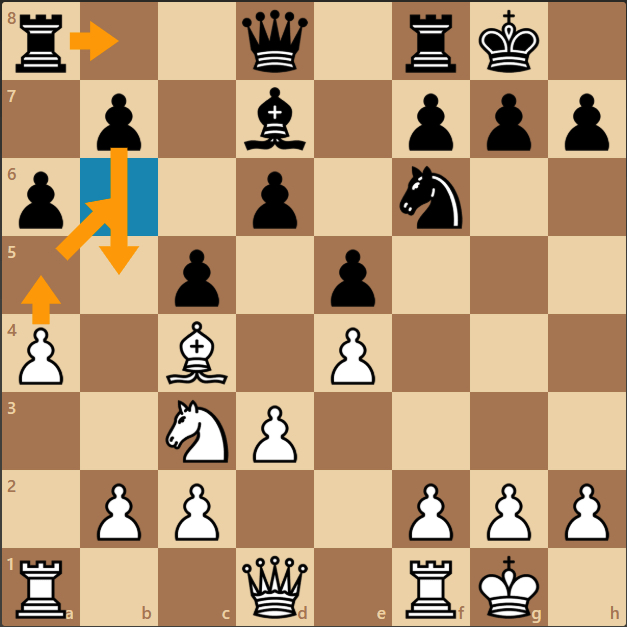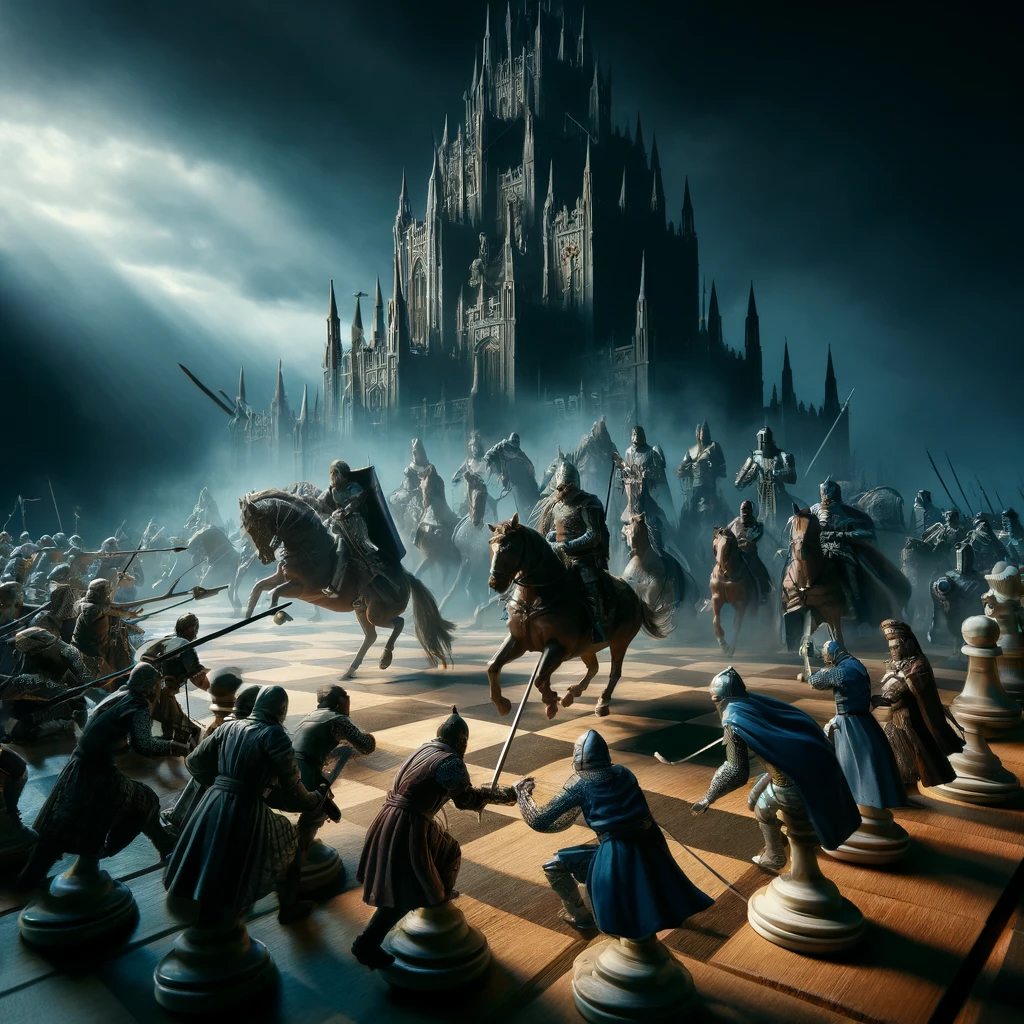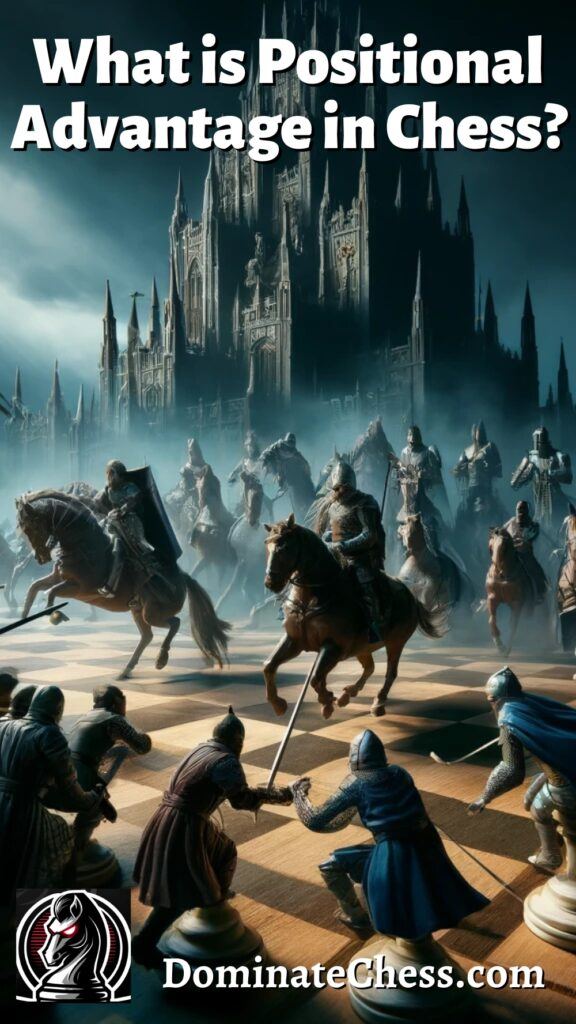When it comes down to the strategies and principles of chess, what is positional advantage?
How much of a factor is positional advantage vs material advantage?
What is Positional Advantage in Chess?
Positional advantage means the placement of your pieces pose a greater threat than your opponents’ pieces. Your opponent may have more pieces than you, but positional advantage trumps material advantage.
Positional Advantage vs Material Advantage
More often than not, when you’re playing chess, whether it be on a board in front of you or online, the first advantage you process is actually the “material advantage”.
Material advantage simply means the value of your pieces being more than your opponents.
Traditionally, the point value assigned to chess pieces looks like this:
- Queen – 9 pts
- Rook – 5 pts
- Knight – 3 pts
- Bishop – 3 pts
- Pawn – 1 pt
Notice the King doesn’t receive a point value. This is because the moment a king is captured the game is over.
Related Article at DominateChess.com!
Ever had a game end in a stalemate? Why isn’t a Stalemate a Win?
So, when you make a blunder and your opponent captures your queen with by sacrificing their lowly pawn, you’ve lost material advantage by 8 points.
Your opponent lost a pawn (-1) but you lost a queen (-9).
Now, being down 8 points is substantial, and the later it is in the game, the less likely you’ll be able to overcome that disadvantage.
But, let’s say it’s early in the game and you lose your rook to your opponent’s bishop, which you then capture.
You’ve lost 5 points, they’ve lost 3. This results in your opponent having a +2 advantage.
Is it game over? Hardly.
There’s plenty of time to take that advantage back.
And how would you do that, even with your opponent having the material advantage? By slowly but surely gaining the positional advantage.
As an example, the entire purpose of the well known move of castling is to give yourself more of a positional advantage.
Sometimes your opponent can let their guard down when they gain a significant material advantage. This opens the door for blunders of their own.
Have you ever lost your queen and then come back to win the game? It’s EXTREMELY satisfying when it happens.
How did it happen?
It stems from positioning the pieces you have left so you gain the positional advantage over your opponent.
You don’t have to wait until you’re at a material disadvantage to focus on your positional advantage. The earlier you can place your pieces in a better position and also weaken your opponent’s position, the better chance you have at winning!
How to Gain a Positional Advantage
Sometimes you get lucky and your opponent makes a horrible opening move to start the game.
But this is increasingly rare as you play more seasoned players.
The video below greatly illustrates several ways to gain a positional advantage in chess.
It details 21 ways to gain that positional advantage you’re looking for with really good explanation for each tip.
I’m going to list several of the highlights below, but I definitely recommend taking the time to watch the video.
The masters of chess all have one common thread, they are masters of positional chess.
- Avoid “bad bishops”
Bishops are great when it comes to long distance threats. However, if your bishop is blocked by your own pawn, this severely handcuffs that threat.
To avoid “bad bishops” get your bishop out ahead of the pawns where they can do the most damage.
- Build a solid pawn structure and create isolated pawns
It all starts with the pawns. Pawns can protect each other and other pieces, but aren’t nearly as effective all by themselves.
Alone they become unprotected targets.
Additionally, if you can force your opponent’s to double up their pawns on the same file (2 pawns occupying the same column), it can really wreck their overall pawn structure.
Anytime your opponent has 3 or more “pawn islands” you have a substantial advantage.
Also remember to take care when moving your pawns forward. Don’t move them up for no reason. They can’t retrace their steps and go back!
- Have your rooks strive to control open files
Just like with your bishops, a rook’s long distance advantage is amplified when the squares ahead of it are wide open.
This gives you a distinct positional advantage and lots of freedom for various attacks.
- Restrict your opponent’s pieces
You see this a lot with bishops and knights.
A well placed bishop can leave your opponent’s knight with nowhere to go. They immediately have to back track and come up with a new attack.

Restricting your opponent’s movement can be done with any piece on the board, and becomes even stronger when you coordinate multiple pieces in unison.
- Don’t trade a good bishop for a bad knight (and vice versa)
Even though knights and bishops have equal point values, you shouldn’t just trade them without thinking about their importance to the specific game you’re playing.
If you have a powerful bishop that has control of plenty of empty squares ahead of it, but you trade it for a knight that’s not really going anywhere and has been controlled, you’ve just lost positional advantage.
The same applies if you have a knight out in the open controlling the center but you use it to attack a bishop that’s blocked and doing little to no damage.
- Do look to trade your bad pieces for your opponent’s good pieces
This follows up on the previous principle.
If your opponent has a piece that’s in a great position, do everything you can to take it out with one of your pieces that’s not doing so much.
Now, does this mean you should take out a threatening knight on an outpost with a stronger piece like a rook? It very well can, depending on the threat.
- Rooks in unison on the 2nd or 7th rank create HAVOC for your opponent
If you’ve ever been on the wrong end of two rooks working in unison on the same file you know EXACTLY how strong this positional advantage can become.
The 2nd and 7th ranks are specifically mentioned here because of the likelihood of lots of pieces to capture as they protect their king.
- Put pawns on opposite color of opponent’s bishop
If you’ve managed to capture one of your opponent’s bishops, a quick and very easy way to minimize its threat is to simply position your pawns on the opposite color.
The bishop can’t cross colors, only moving in diagonals, and this eliminates any threat it could have on your pawns.
- Think ahead and spoil your opponent’s plan
Chess isn’t just about formulating your own attacks. You need a balance of offense vs defense.
If you can see what your opponent is trying to do and can block it without placing your pieces out of position, this gives you the positional advantage.
In this example, by thinking ahead and getting your a4 pawn to a5, you spoil your opponent’s potential plan of getting his b7 pawn to b5, creating space for his rook.

Piece Activity and Controlling Space
Placing key pieces where they can do the most damage vastly improves your positional advantage.
Coordinating your attacks improves it even more.
Several of the points below go hand in hand with the strategies detailed in the video above.
- Work to place your rooks on open files.
- Get your bishops to control unblocked diagonals.
- Place your knights away from the periphery and more towards the center of the board where they control the most squares.
- Use your pawns to control the center of the board.
- Don’t forget about defense! Castle early to protect your king while simultaneously developing your rook.
Do these in conjunction and it would take a MONUMENTAL blunder on your part to lose the game.
Final Thoughts
Positional advantage beats material advantage and the principles behind why it does will serve you very well in becoming a solid chess player.
What do you think? Do you have a better understanding of what it take to gain a positional advantage in chess? Which of the tactics listed do you think you’ll be implementing in your next games? I’d love to hear what you have to say! Leave your questions and comments below and I look forward to replying back!



I always regarded positional advantage in fairly vague terms, like just looking at the board and feeling whether I or my opponent had the stronger position. Intuitive, rather than measurable.
Your article has given me greater insight on that. I loved the concept of “pawn islands” and “Do look to trade your bad pieces for your opponent’s good pieces”.
I’m going to watch the video next. Looking forward to it!
Glad you enjoyed it! Thanks for the comment!
Ever since I watched The Queen’s Gambit on Netflix, I’ve been getting a lot of chess YouTube videos recommended to me. A lot of them were videos of high-ranking chess players going against each other and although interesting, I had no idea what was going on given my very limited knowledge of chess. It’s super great to read this article and learn more about chess tactics and strategies. Do you have any recommendations for how someone like me who knows the basic rules of the game to become a more advanced player?
That’s what this site is all about! But more important than anything is actually playing. Chess.com is great for that and it’s free! Thanks for the comment!
I’ve always struggled with the game of chess as I feel like more often than not I make the wrong move. So I’ve been researching ways to win more often and finding your article have found that a positional advantage in chess is very important to success or failure. I took a bit of time to watch the YouTube video and it really helped me understand the strategy of trading your pieces in a bad position for your opponents pieces in a good position. This is definitely a page to bookmark so I can refresh my memory before playing a game of chess. Thanks
Happy that video helped! Once you start thinking about your positional advantage in the game and are able to spot weaknesses in your opponent’s attack it makes a HUGE difference!
I am not a great chess player by any stretch and i found the information here very helpful. Proper position on the battlefield has been used to ensure victory for thousands of years just like chess. I will be bookmarking this post for sure as it’s filled with good nuggets everywhere! thank you.
Thanks for the comment!
There have been several chess games against one of my cousins, I would play against him, and constantly lose. But since coming across this particularly article, I’ve been gaining knowledge of my mistakes of chess moves and would like to utilize the “positional advantages” you’ve enlisted to start playing again.
Also, the video helped explain it a lot. I know in future games to avoid sacrificing the bishops and knights.
Great article!
Glad you enjoyed this! Thanks for the comment!
I loved this article. I watch my son and daughter play often and now understand a bit more of what they are doing as they play each other. Sometimes things happen so quickly I can’t keep up with them
Your posts are pushing me to learn more about how to play so I can join in rather than just watch them.
Thank you! Kevin.
Glad you enjoyed this article! Have fun and play! Thanks for the comment!
Hey there! I’m still learning the ins and outs of chess strategy, and I’m curious about how a player with a positional advantage can still come out on top even if they have a material disadvantage. I know that bad bishops (bishops that are blocked by their own pawns) can hinder a player’s position, but are there any other tips or examples you can share on how to turn a material disadvantage into a win? I’m always looking for new ways to improve my game and have more fun while playing chess!
Yes, each of the 21 listed in the video will give you the advantage you need even if you’re down material. Thanks for the comment!